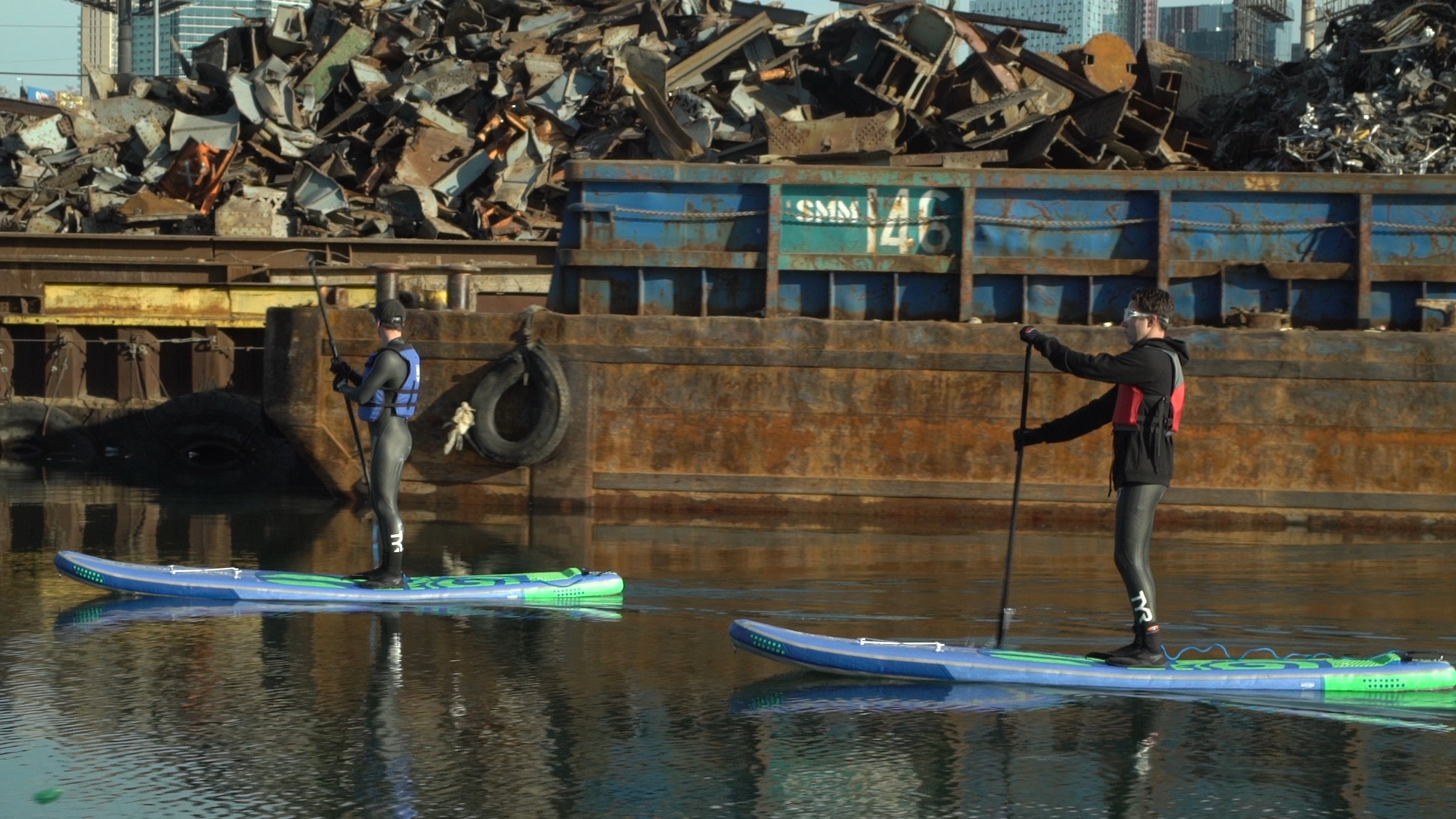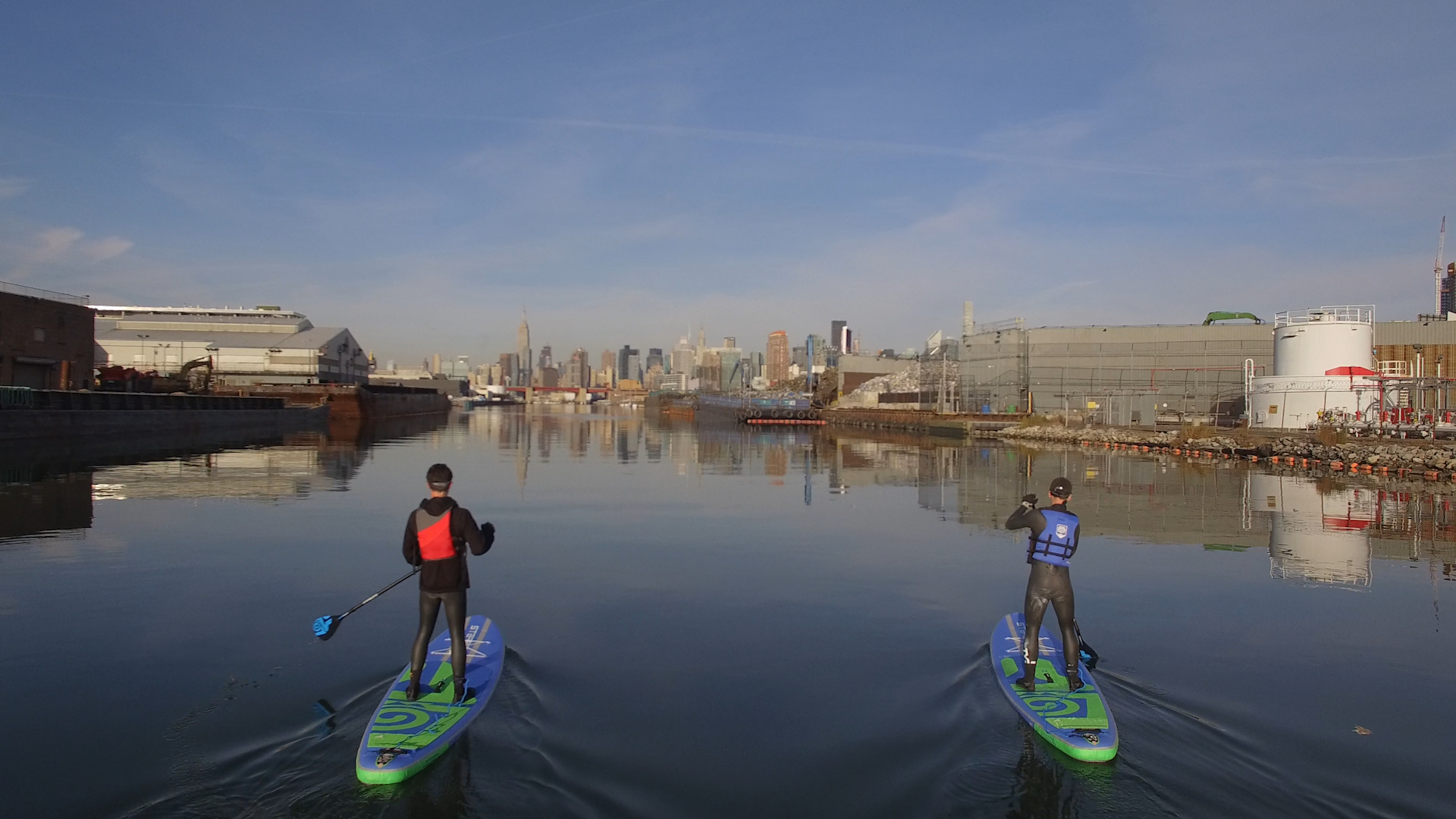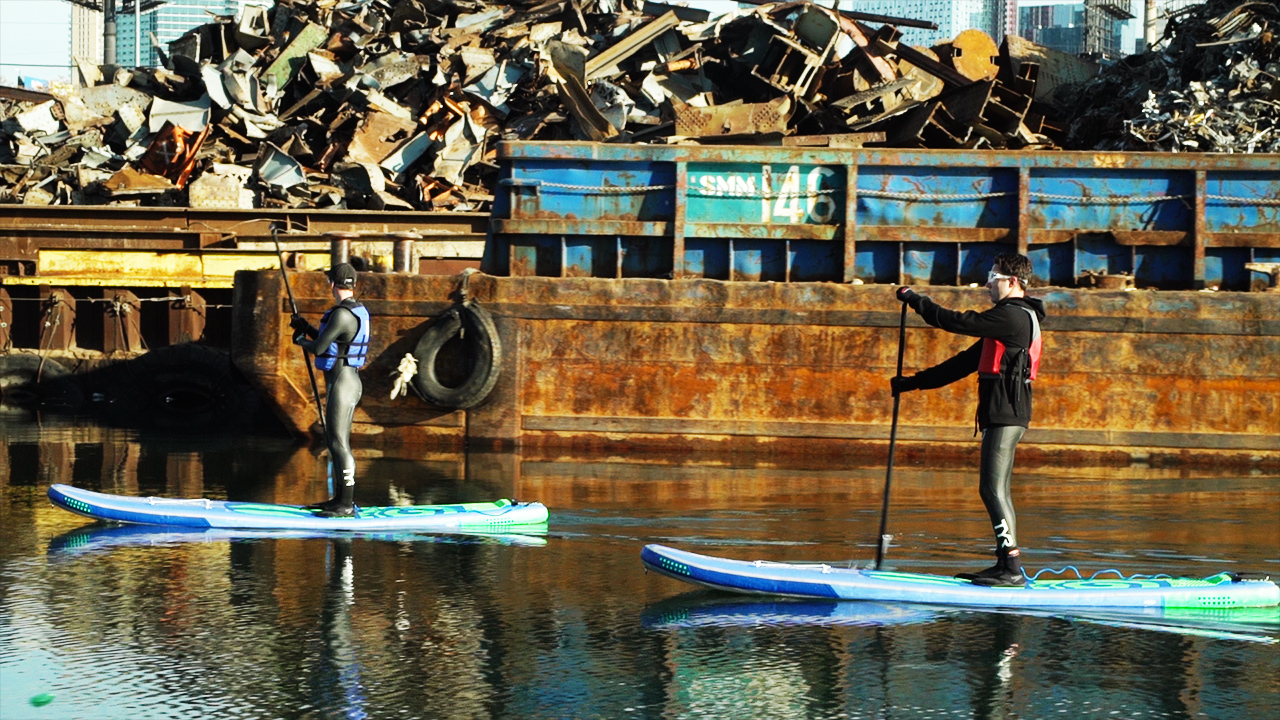Environmental pollution from industry abuse and human negligence feels like it’s part of another era — especially if you live in America. For many of us, it all feels like something that happens elsewhere and not in our own backyards. While we have made great strides in fighting against industrial pollution since President Nixon founded the EPA, there have been numerous regressions and disasters along the way. Sometimes, it’s right under our noses.
Brothers Sam and Gary Bencheghib have taken matters into their own hands. When they moved to Brooklyn, they were shocked to find several of the country’s most polluted waterways weren’t a country away but, literally, in their own backyards. For the earth-loving duo, it was a call to action.
The brothers — along with millions of residents in Queens and Brooklyn — live within a stone’s throw of three Superfund sites. Those are the places the EPA deems so polluted, toxic, or destroyed by a natural disaster that a fund has to be set up to clean up the area as quickly as possible. Among these, Newtown Creek is considered one of the most polluted spots in all of the United States. This is thanks to over a century of industrial waste being spewed into the river, raw sewage still being pumped into the waterway every day, and a semi-continual oil spill that’s seen 30 million gallons spilled into the water.
Add in the usual plastic waste that’s clogging our waterways and you have an American river that’s bafflingly poisoned.

The Gowan Canal is similarly toxic. The freshwater stream has been used for shipping of waster and toxic materials for so long that if you were to fall into the water, you’d have to be rushed to a hospital for decontamination procedures. Drinking the water would risk dysentery, arsenic poisoning, and, eventually, cancer.
The Bencheghib brothers know they cannot clean this up all by themselves. Their task is to bring awareness to the sites through their work with Make A Change World. The group aims to directly involve the average person is cleaning up the messes we’re making around the world — through an overuse of plastics and the under-regulated waste from industry.
Currently, “the bros” are focusing on their own backyard in Brooklyn, by highlighting the Superfund sites of Newtown Creek and Gowan Canal. These two sites are both earmarked for clean up operations to begin, but the process is slow and faces hurdles. Meanwhile, the current White House leadership plans to cut $327 million out of the EPA’s Superfund budget and has forbidden the EPA from speaking with citizens.
Luckily, the administration’s disinterest in the environment won’t have drastic effects on the clean up of Newtown Creek and Gowan Canal, as those sites have responsible parties who have been tasked with funding the lion’s share of the cleanup costs. WNYC reported back in November that the six major polluters of Newtown Creek were identified along with the 30 polluters of Gowan Canal. This means, hopefully, the cleanups will go forward unhindered.

Just down the street from Newtown and Gowan is a site called Wolff-Alport. This was the site of an earth metals extraction facility that shuttered in the 1950s. One of their extractions was the radioactive element thorium. That process has made the Wolf-Alport site the most radioactive spot in New York City. Since the company responsible for the radioactive pollution went out of business over 70 years ago, there’s no one to fine and, thereby, collect the funds to clean up the site. The whole tab falls on the shoulders of the EPA’s Superfund budget. WNYC talked to the EPA and they have an estimated cost of $39.9 million to clean up this radioactive site. Currently, there’s $650,000 in the account designated for that job. The acting deputy regional administrator for EPA said bluntly of the site that “What we do know is that people are actually being exposed.”
It would seem to reason that radioactive exposure to the citizens of New York would be a little higher on the list of sites the EPA and local, state, and the federal government would be rushing to clean up. That’s where Make A Change World comes in. 75 years is too long to wait for a radioactive, oil-soaked, or just plain toxic site to be cleaned up. Like the Bencheghib brothers, it’s time to take action in our backyards, in the voting booths, and in how we live our lives.







